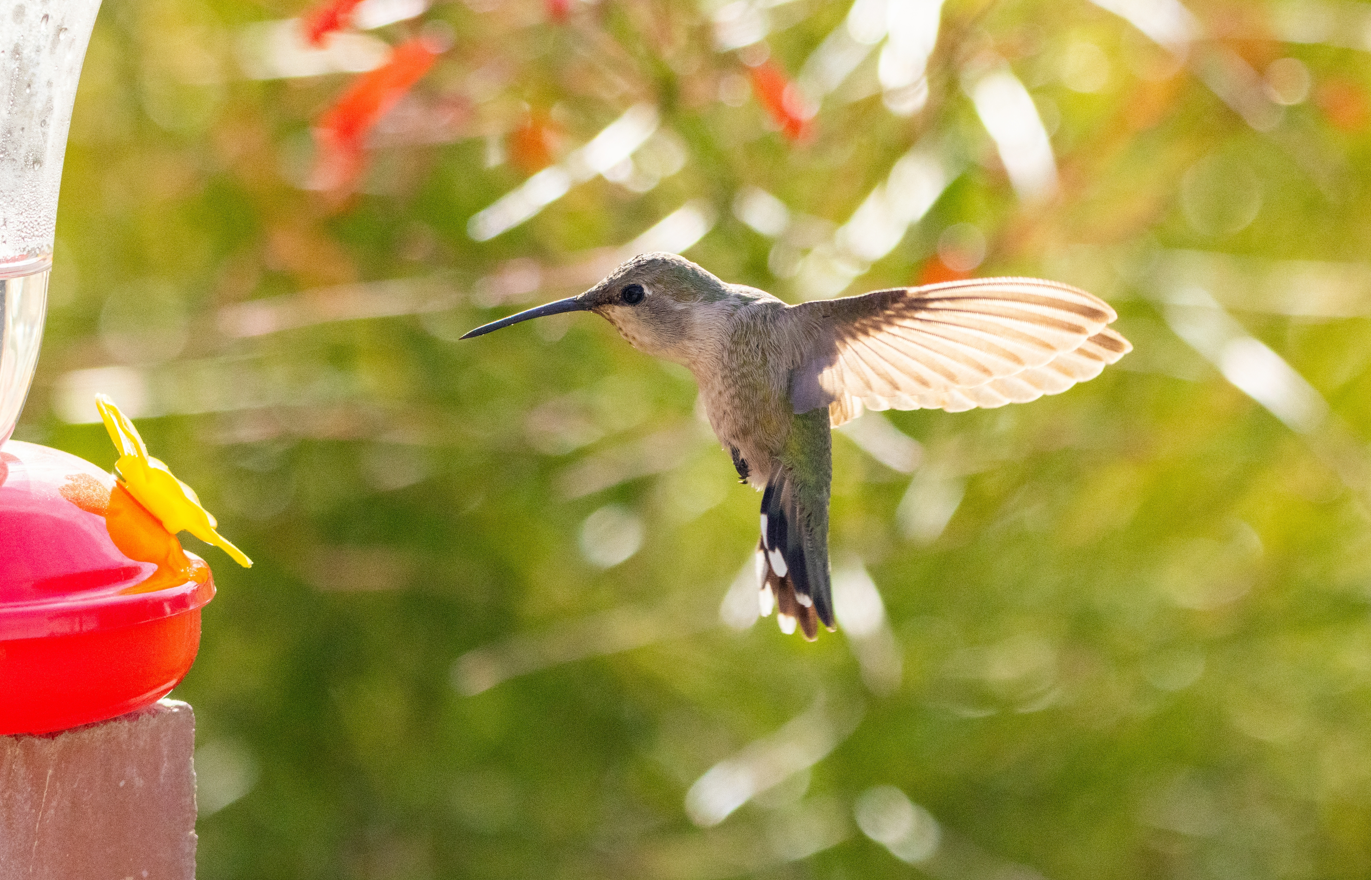Hummingbirds in California are rapidly evolving. Within just a century, perhaps even just a few decades, their beaks have been getting pointier and pokier. Scientists believe the (relatively) rapid change has been driven by humans, whose supplemental feeders and introduced plant species have helped change the way these fluttering cuties move, eat, and live.
In a new study, researchers started by looking at populations of wild Anna’s Hummingbirds (Calypte anna) living in California and beyond through historical bird survey data collected between 1938 to 2019.
This showed that the distribution of the hummingbird species had dramatically expanded over the decades. The historical range of Anna’s Hummingbirds was previously limited to breeding populations in warm regions like Baja California, Mexico, and southern California, but they now happily live along much of the Pacific coast of North America, reaching as far north as southern Alaska.
The researchers linked this dramatic population shift to two major human-driven changes: the widespread planting of eucalyptus trees, imported from Australia in the 1800s, and the rising popularity of backyard hummingbird feeders in the 20th century.
Together, these changes transformed the landscape, making nectar-rich food sources available year-round. For the hummingbirds, it was like flipping a switch from seasonal scarcity to constant abundance. Suddenly, the birds were able to thrive in areas where it was once not possible.
As is often the way with birds, female Anna’s hummingbirds are less colorful than the boys.
Image credit: Brenda Nielsen/Shutterstock.com
By no coincidence, the beak size of Anna’s Hummingbirds significantly changed within this same timeframe. The researchers compared the beaks of hummingbirds in museum collections and found that those in southern California had become increasingly pointed and sharp over the century.
These streamlined beaks made it easier to sip nectar from artificial feeders, giving certain birds an edge in survival and reproduction. As the population boomed, the sharper shape may have also offered a competitive advantage in territorial skirmishes over prime feeding spots.
Interestingly, these elongated beaks might serve a dual purpose: helping the birds shed excess heat. Infrared imaging revealed that hummingbirds may use their beaks to radiate heat and cool down, similar to how elephants radiate heat through their big, flappy ears. With their incredibly fast-beating hearts and wings, hummingbirds are like tiny supercharged engines, prone to overheating without some clever built-in cooling systems.
However, the trend reverses in cooler northern regions where Anna’s Hummingbirds have more recently expanded. There, the birds have moved towards having shorter, stubbier beaks, possibly an adaptation to help retain body heat in colder climates.
The pace of this subtle evolutionary shift is especially striking. In an interview with Science, co-lead author Nicolas Alexandre – who conducted the research as a graduate student at the University of California, Berkeley, and now works as a geneticist at Colossal Biosciences – explained that the most dramatic changes occurred between the 1930s and 1950s. Remarkably, this transformation took place over just about 10 generations of hummingbirds.
Evolution is generally an achingly slow and gradual process that unfolds over many generations. However, scientists are constantly finding examples of rapid evolution occurring over a few generations; just look at how ivory poaching during the Mozambican Civil War changed the country’s elephants.
The new study is published in the journal Global Change Biology.
Source Link: Hummingbirds Have Rapidly Evolved In California Over The Past Century
